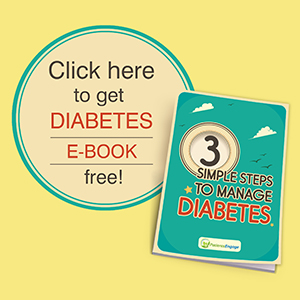
A wife and caregiver shares the challenges of her husband living with G6PD (Glucose-6-phosphate dehydrogenase) deficiency and how it has impacted his health and their family. This is their story.
My husband Vincent* has G6PD deficiency – a condition which is a disorder and not a disease. He has been living with the condition with some precautions while managing various illnesses.
|
What is G6PD Deficiency?
Glucose-6-phosphate dehydrogenase deficiency is a inherited genetic disorder that affects red blood cells, which carry oxygen from the lungs to tissues across the whole body. A defect in an enzyme called glucose-6-phosphate dehydrogenase leads to early breakdown of red blood cells and at a frequency faster than at which they can be replaced. This damage and breakdown of red blood cells is called hemolysis or hemolytic anemia. This type of anemia leads to skin and eyes turning pale like in jaundice, yellow or dark coloured urine, tiredness, difficulty breathing, and a rapid heart rate or even extremities like the toe and finger nails turning blue.
In individuals with this deficiency, bacterial or viral infections or certain drugs (certain antibiotics, anti-malarial drugs, non steroidal anti inflammatory drugs etc.) can trigger the breakdown of the red blood cells. Favism caused by eating fava beansor inhaling pollen from fava plants can also trigger hemolytic anemia.
Causes of G6PD?
Glucose-6-phosphate dehydrogenase deficiency is caused by mutation of the G6PD gene and is transferred genetically. This gene directs the production of the G6PD enzyme, which is essential for which in turn helps process carbohydrates and prevent harmful substances from damaging the red blood cells. The deficiency causes a hindrance to the above.
|
Diagnosis of G6PD deficiency
The first incidence happened when, as a kid, my husband hurt his leg while playing and was prescribed Sulpha drugs for topical application but the wound would not heal. The wound healed only when the medication was changed. That episode was long forgotten and the only caution was not using any sulpha drug internally or externally. No specific diagnosis was done at this time.
The G6PD deficiency diagnosis was accidental when we had done a blood test for another blood disorder which is Thalassemia. There was a history of Thalassemia in his family - my husband and his sibling had the minor gene. This was discovered after our marriage, after we had our first child. At the time of my second pregnancy, a blood check was done to ensure all of us were clear of Thalassemia. This test however revealed the G6PD deficiency in my husband.
My husband and I felt we got some clarity with the diagnosis and also were convinced that this was a condition we could manage with a bit of care and alertness as we were informed that the sulpha allergy he had as a kid was due to this. We were given basic information and told to avoid a list of related medicines and informed of certain type of foods that needed to be avoided.
Managing the G6PD deficiency Disorder
Best thing we did was get our kids checked for G6PD deficiency along with the Thalassemia check as G6PD deficiency is an inherited condition.
There was no major issue in my husband’s growing years and the disorder stayed fairly dormant and didn’t crop up as an issue in any of his treatment however minor. There was no special or additional precaution taken either in the diet or treatment. However, we had two episodes where we were reminded of his disorder.
Episode 1
In 1995 my husband had a headache, cold and fever and a complication that took the infection to his brain through the ocular (eye) cavity. After a CT scan, he was immediately admitted to the hospital and a course of treatment was started. Within a few minutes of the drip being administered I noticed his nails were turning blue and he was developing an allergic reaction. Luckily, we caught it immediately and the condition was corrected with antihistamines and steroids. We learnt later that it was the Ciprofloxacin antibiotic that caused it. He was then treated with an alternate antibiotic as his condition needed a stronger alternative to treat the infection that relapsed when the steroids were weaned.
Then began our hunt for the list of medicines that he could take and couldn’t via the internet and any scientific and medical contacts and resources we had - our GP, specialists he consulted for his hospitalisation, and we ensured he carried a printed list in his wallet from then on.
There was nothing notably affecting him through his diet. Occasionally peanuts created some stomach pain but no noticeable or serious allergic reaction. Some strong perfumes cause allergic cold and cough which if left untreated lead to a full blown infection with fever. He was advised by his ENT specialist from the last hospitalization to resort to steam inhalation at the first sign of a cold or sniffle and he has followed that advice very seriously.
Episode 2
The other issue we struggled with was his medical claim due to this condition. He was never ever treated for G6PD deficiency and we only mentioned it when he needed treatment or hospitalization.
During the pandemic, he was hospitalized due to severe Covid. Initially the cashless claim was rejected because G6PD was mentioned as being diagnosed along with Covid. Unfortunately, this was recorded in the history sheet as a condition and we were asked to provide childhood records of treatment. As we were busy with his Covid treatment, we decided to try our chance with reimbursement of expenses.
While we were still struggling with Covid recovery, we got to know our reimbursement also was totally rejected. We had to go through extensive search on the internet to find scientific medical papers that clarified that this wasn’t a condition that needed treatment and no medication could be prescribed for the same. The medical department of the insurance company had no clue about the details of G6PD deficiency and they literally needed basic education on the same.
Caution and prevention
We now know this will always remain as a precautionary measure we need to take for any treatments he may need in the future. We also need to exercise some care on his diet, specifically any triggers that can cause any issue with his digestive system, immunity or allergy.
Even a common cold or viral flu puts us on alert and there are limited choices of treatment available. Any new doctor we see needs to be fully informed about this condition.
Thankfully this has not been a deterrent for my husband to carry on his personal and professional life as normally as possible. There are no restrictions on travel or carrying out any of his hobbies or interests.
Learnings from his experience of living with G6PD deficiency:
- Always watch out for any allergic reaction to food or medication and don’t treat this lightly. Seek medical advice for any further investigation needed.
- Get the necessary tests done to diagnose the deficiency if caught through any episode or symptom like any allergic reaction of lips/nails of hands/feet turning blue post an oral or intravenous medication, a wound that doesn’t heal with any specific medication despite absence of diabetes, paleness in skin or eyes, shortness of breath. The tolerance level for any medication or food varies from person to person depending on the extent of deficiency and needs to be identified on a case to case basis.
- Be aware and carry a list of all medication that should be avoided. Show this list to your doctor or any hospital during admission.
- Do not take any medication without the prior advise of a medical professional.
- Watch out for foods that can be a cause for trouble.
- Relax if all this is in control and go on with your regular activities
- Be on top of your medical insurance and pre-requirements. Mention this in the history as needed.
- Be absolutely clear during hospital admission that this is not mentioned as a condition for admission but only as a precaution for allergy to any medication.
What worked for me as the Carer/Family member
As a close relative of someone with G6PD Deficiency in the family
- Ensure first of all that everyone in the family including kids are tested, considering this condition is caused due to a gene mutation
- Ensure that the individual with the deficiency has identified what foods or medications might be causing problems related to the deficiency.
- It is important for you as a carer also to be aware of the same in case of any emergency.
- Try and accompany the individual for any medical consultation or hospitalization so you can have all information on the treatment that is suggested.
- Be equipped with all the knowledge and data that can be used when dealing with medical claims and insurance.
- Watch out for any allergic reaction like extremities - toes, fingers or face/lips turning blue after taking any medication or food.
Food to be avoided for people with G6PD deficiency:
- Assorted Legumes: (e.g. Fava Bean also known as Broad Bean, Windsor Bean, Horse Bean, Bell Bean, English dwarf bean, Fever bean, Haba bean, Tick bean, Pigeon bean & Silkworm bean.) Soy, Peanuts, Peas, Fenugreek and other legumes have also been noted as possible triggers.
- Artificial food dyes found in processed foods are listed as a harmful G6PDd trigger.
- Bitter (Gourd-melon) also contains vicine which is believed to be the hemolytic agent found in the Fava Bean.
Drugs to be avoided for people with G6PD deficiency:. (Please verify with your doctor)
| Category | Drug Names / Examples to be avoided by G6PD patients |
| Malaria Prevention Drugs | Primaquine - Chloroquine - Hydroxychloroquine |
| Methemoglobinemia Treatment | Methylene blue (Methylthioninium chloride) |
| Sulfa Drugs | Sulfones (e.g., Dapsone) - Dapsone (Aczone – acne treatment) |
| Urinary Tract Infection Drugs | Phenazopyridine (e.g., Baridium) - Nitrofurantoin (e.g., Macrobid) - Nalidixic acid - Sulfamethoxazole |
| Chemotherapy Detox Agent | Rasburicase (e.g., Elitek) |
| OTC Salicylate-Containing Drugs | Aspirin (Acetylsalicylic acid) - Anacin - Bufferin - Ecotrin - Empirin - Excedrin - Kaopectate - Pepto Bismol |
Harmful Chemicals & Dyes that should be avoided
- Naphthalene (found in mothballs)
- Beta-Naphthol (2-Naphthol) — used in fabric/spice dyes (e.g., Sudan dyes)
- Camphor and menthol products (balms)
- Henna (hair and tattoo dye)
- Blue dyes — Methylene and Toluidine (used in medical dyes/screenings)
- Naphtylhydroxylamine — found in some household cleaners (drain, oven, bathroom)
* Name changed on request
References:
https://medlineplus.gov/genetics/condition/glucose-6-phosphate-dehydrog…
g6pd Deficiency Foundation: https://g6pddf.org/what-to-avoid-g6pd-lifestyle/






